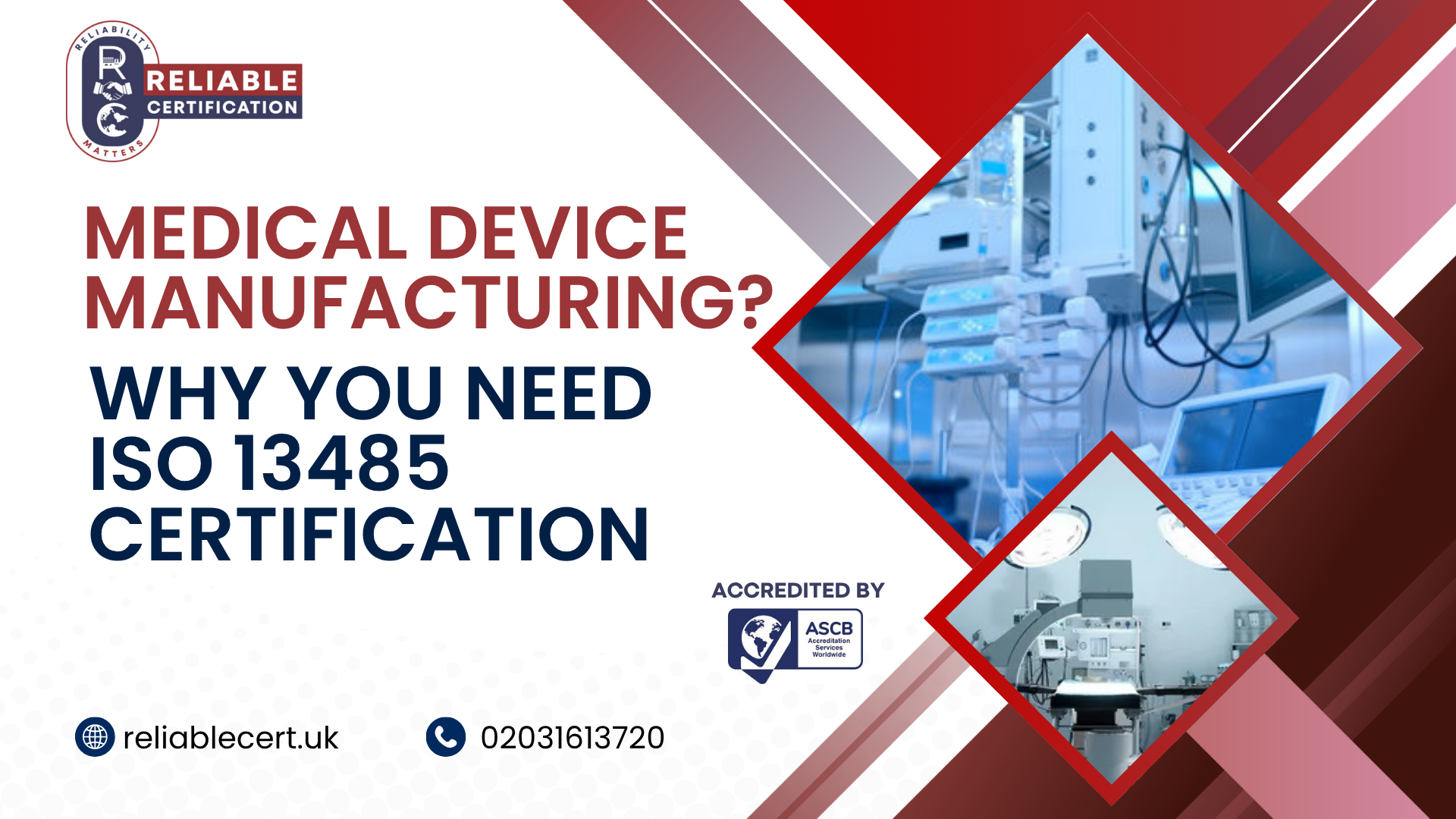Discover why ISO 13485 certification is vital for medical device manufacturers. Learn how it ensures safety, compliance, and global market access.

In the fast-evolving world of healthcare, one thing remains constant patient safety and trust. Whether it’s a pacemaker, surgical instrument, or diagnostic kit, medical devices must perform reliably under strict regulatory scrutiny. That’s where ISO 13485 certification becomes essential.
This international standard outlines the requirements for a robust Medical Quality Management System (QMS) specifically designed for organisations involved in the design, production, and servicing of ISO 13485 Medical Devices.
So, why is ISO 13485 certification a must-have for medical device manufacturers? Let’s explore how it helps ensure device safety and performance, meet regulatory compliance for devices, and uphold the highest healthcare quality standards.
ISO 13485 is an international standard that sets out the criteria for a QMS for medical devices. Published by the International Organization for Standardization (ISO), it is tailored to the lifecycle of medical devices covering design, production, installation, servicing, and even disposal.
Unlike general ISO 9001, which applies to all industries, ISO 13485 certification focuses exclusively on the medical device sector, addressing the unique risks and regulations that manufacturers face.
ISO 13485 is relevant to any organisation involved in the medical device supply chain, including:
Whether you're producing Class I surgical gloves or Class III implantable devices, having a certified Medical Quality Management System is key to sustainable growth and global market access.
Let’s break down the real-world benefits of ISO 13485 certification for your business:
At its core, ISO 13485 ensures that every medical product you design or manufacture consistently meets safety, reliability, and performance standards. This is critical in healthcare, where errors can cost lives.
Global health regulators often require ISO 13485 certification as part of market entry requirements. For example:
Certification helps you avoid fines, recalls, and product delays by ensuring your quality system aligns with regulatory compliance for devices.
ISO 13485 encourages streamlined processes, clear documentation, and a preventive approach to quality. This not only reduces waste and errors but also improves collaboration across departments.
International buyers, distributors, and health authorities often view ISO 13485 Medical Devices as a mark of trust and quality. Certification opens doors to international trade and business growth.
Having ISO 13485 certification gives you a competitive edge in tenders, public procurements, and B2B contracts. It signals professionalism, compliance, and dedication to quality.
To get certified, your organisation must build and maintain a documented QMS for medical devices that meets the ISO 13485 standard.
Here are some of the major requirements:
This ensures that you not only meet healthcare quality standards but also proactively manage risks at every stage of the device lifecycle.
While ISO 9001 is a general quality management system standard, ISO 13485 is specifically designed for the medical device industry.
|
Feature |
ISO 9001 |
ISO 13485 |
|
Industry |
All industries |
Medical devices only |
|
Focus |
Customer satisfaction |
Patient safety & regulatory compliance |
|
Risk Management |
General |
Detailed and mandatory |
|
Documentation |
Flexible |
More prescriptive |
|
Regulatory Alignment |
Not specific |
Aligned with global regulators (FDA, EU MDR, etc.) |
So, while ISO 9001 is helpful, it doesn’t fully meet the unique demands of the medical sector. For manufacturers, ISO 13485 certification is the gold standard.
Here’s how to get started with certification:
Review your existing quality processes against ISO 13485 requirements.
Create documented policies, procedures, and records that meet ISO 13485 standards.
Train your staff to follow processes and understand quality goals.
Conduct audits to check if your system works and identify any issues.
Review audit findings, risks, customer complaints, and improvement plans.
A UKAS-accredited or internationally recognised certification body audits your QMS.
If you pass the audit, you receive your ISO 13485 certificate, typically valid for 3 years with annual surveillance audits.
Achieving ISO 13485 certification is not just a checkbox exercise—it’s a strategic investment in your company’s future. From meeting regulatory compliance for devices to ensuring device safety and performance, this internationally recognised standard is the cornerstone of trust in the medical quality management system.
Whether you’re a new manufacturer or an established industry player, now is the time to align with healthcare quality standards and position your business for long-term success.
At Reliable Certification, we help medical device companies across the UK and beyond prepare for and achieve ISO 13485 certification. Our experienced team will guide you through the process, helping you build a compliant and efficient QMS for medical devices.
✅ Contact us today to get started
Typically replies within 30 minutes